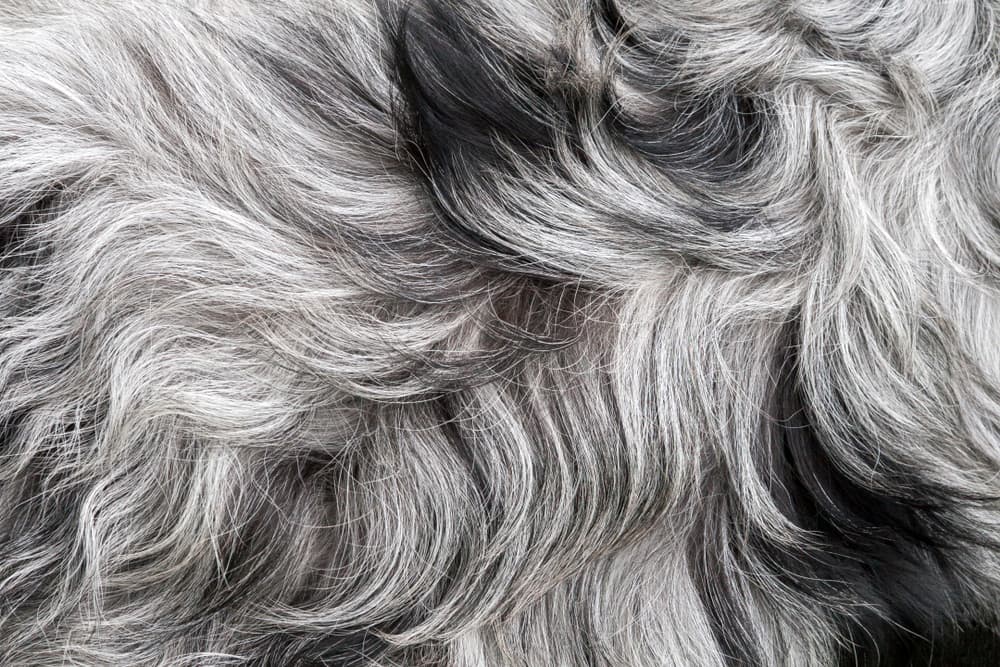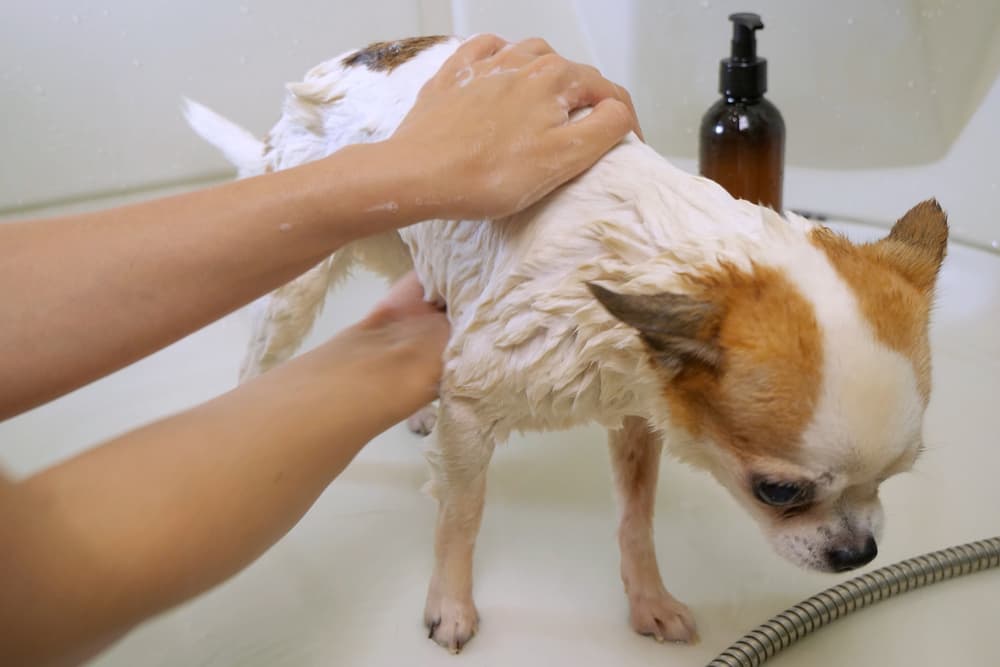Overview
Folliculitis is a common tegument condition in dogs that is often the result of a bacterial contagion . This bacterial transmission may be triggered by skin allergic reaction , flea allergies , or hormonal diseases including Cushing ’s disease and hypothyroidism . Symptoms of folliculitis in dogs admit itchiness , redness , swelling , bumps on the skin , and orotund country of hair departure . Treatment typically involves a combination of antibiotics and medicated shampoo .
As one of the most common canine pelt conditions , folliculitis will impact many dogs at some point during their life . Fortunately , this condition is often comparatively soft to treat , with veterinary attending .
However , many case of folliculitis in wiener are prone to recur , until you visualize out the underlie factors that are causing this condition .

What Is Folliculitis in Dogs?
Folliculitis refers to inflammation within a hot dog ’s hair’s-breadth follicle . There are a bit of different component that can do folliculitis , though the most common causa is a bacterial infection . In many casing , the condition bacterial folliculitis is used interchangeably with skin infection when describing a dog ’s hide condition .
Causesof Folliculitis in Dogs
A pregnant bulk of folliculitis cases are associated with a bacterial infection in dog . Every dog has a normal universe of bacterium that live on the surface of the peel . In most dog , these normal skin bacteria do not cause any job or sign of disease . In some weenie , however , the normal skin bacteria proliferate out of dominance , cause infection and inflammation within the whisker follicle and in the other layers of the skin . This result in folliculitis .
The most common cause of folliculitis is underlie cutis allergies . Dogs may be allergic to inhaled environmental allergen , nutrient factor , orfleas . Any of these allergy can make a dog more probable to develop bacterial folliculitis . Endocrine ( hormonal ) diseases such asCushing ’s diseaseand hypothyroidism can also predispose a dog to folliculitis , as can immune disorder .
Some cases of folliculitis in dogs are localized , move only a single belittled portion of the skin . localise folliculitis may be because of self - psychic trauma , ingrowing hair , pressure calluses , or other local factors that predispose that part to skin contagion . Callus infections , interdigital cysts(swellings that occur between the toe ) , and chin acne are all common types of localized folliculitis that may be seen in dogs .

While most compositor’s case of folliculitis are triggered by bacterial contagion , non - bacterial folliculitis can fall out . The two most uncouth cause of non - bacterial folliculitis are fungal infections and skin mite . Ringworm(a fungal infection ) infects the hair follicle , cause folliculitis and hairsbreadth loss . Demodex mites ( atype of mange ) also infect the hair follicle , causing folliculitis and hair loss .
Symptomsof Folliculitis in Dogs
When the whisker follicle is inflamed , a mixture of visible change may occur in the skin . You may see signs of inflammation , such as itching , red , and swelling . Pustules on cad can also be a common planetary house of folliculitis . Additionally , fervour of the hair follicle often leave in hairsbreadth loss .
Signs of folliculitis in hound may include :
Some dogs may show very pronounced sign of cutis inflammation , while other dog may have more mild signs . hide changes associated with folliculitis may pretend the entire body or they may be localized to a unmarried region , depending on the cause of your frump ’s folliculitis .

Diagnosing Dog Folliculitis
Folliculitis requires a veterinary visit in parliamentary law to arrive at a diagnosing . Your veterinarian will first perform a forcible examination , measure your dog ’s overall wellness and pay measured tending to your heel ’s skin . Your veterinary will look for wound consistent with folliculitis , while also looking forsigns of fleasor other potential causes of folliculitis .
A skin abrasion will be used to rule out skin mites , while a fungous culture and/or Wood ’s lamp examen will be used to predominate out ringworm . Your veterinarian may also advocate a skin biopsy , to chuck out other type of hide disease .
Once your veterinarian has fix that your dog has bacterial folliculitis , extra tests may be recommend to reassert the diagnosis and further characterize your bounder ’s infection . Your veterinarian may perform a skin cytology , in which a sample of debris from the skin ’s surface is collected and examined under a microscope . A skin cytology let your veterinary surgeon to look for bacterium andyeaston the skin ’s surface . Your veterinarian may also commend a bacterial civilization and sensitivity , to limit which bacteria are causing your detent ’s folliculitis and which antibiotic will be most effective against those bacteria .

In cases of repeated or inveterate folliculitis , your veterinarian may commend testing to determine the underlying cause of your bounder ’s skin condition . These test may include origin test , uranalysis , and allergy testing .
Dog FolliculitisTreatment
treat bacterial folliculitis typically requires a combination of systemic and topical medications . Systemic ( whole dead body ) antibiotic drug are a mainstay of treatment , helping to eliminate bacterial contagion deeply within the tegument . These antibiotics are usually given by word of mouth although , in some cases , a long - acting injection may be recommend . Medicated shampoo is often prescribed as an tending to systemic antibiotic therapy . These treatments are continued for at least three weeks , with some dogs need several months of therapy to winnow out their infection .
Your veterinarian will in all probability schedule an appointment to recheck your dog ’s skin after two to three weeks of discussion , to assess your Canis familiaris ’s response to therapy and check that medications are not stopped too early on .
Many dogs also need treatment targeted at the underlying cause of their bacterial folliculitis . For example , a dog with folliculitis cause by environmental allergic reaction will in all probability require medications to ensure cutis inflammation . Without addressing the skin inflammation , it will be hard to do away with your dog ’s folliculitis .

If your dog ’s folliculitis is make by roundworm or demodex mites , your veterinarian will prescribe appropriate discussion to eliminate these organism . A assortment of handling are usable for both roundworm and demodex , so your veterinarian will select the most appropriate treatment for your click and your specific family circumstances .
How to PreventFolliculitis in Dogs
The most crucial measure in preventing folliculitis is to control the underlying conditions that predispose blackguard to bacterial skin infection . Most showcase of folliculitis are because of skin allergic reaction ; therefore , managing tegument allergies is one of the unspoilt ways to prevent folliculitis .
If your dog has underlying ductless gland diseases ( such as hypothyroidism or Cushing ’s disease ) or immunosuppression , assure that these conditions are appropriately carry off can also play a use in preventing folliculitis in blackguard .

